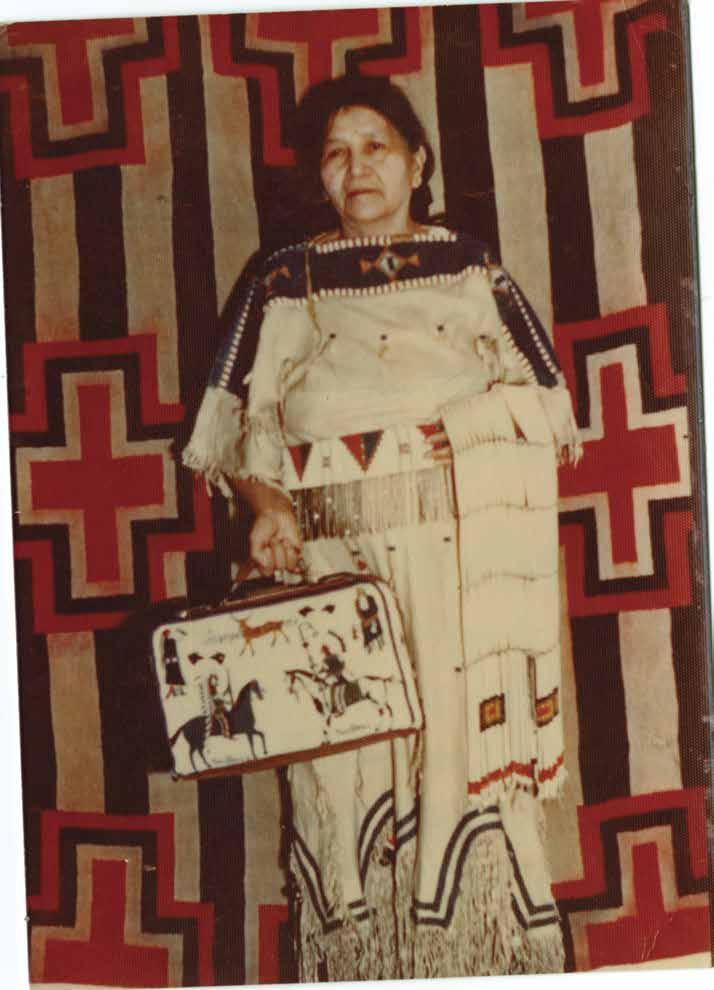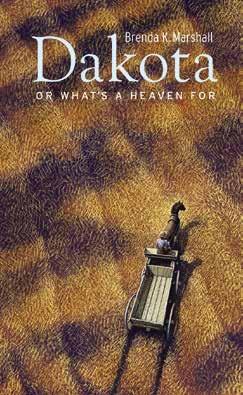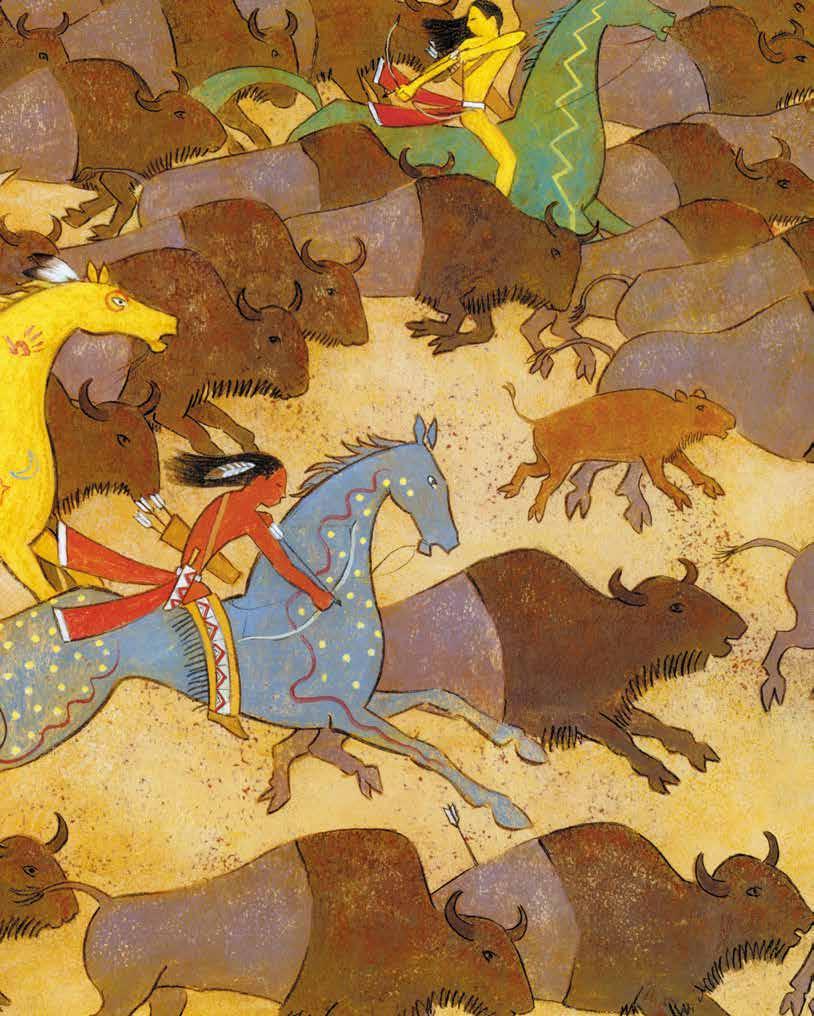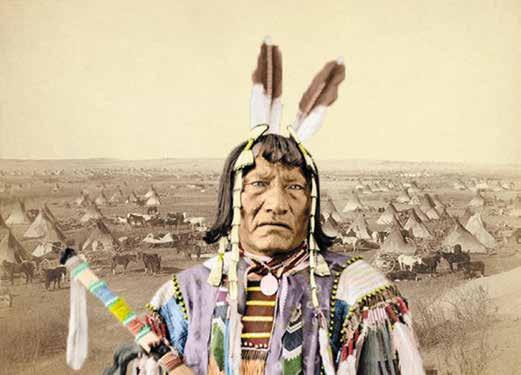
10 minute read
What Does It Mean to Think Indian?
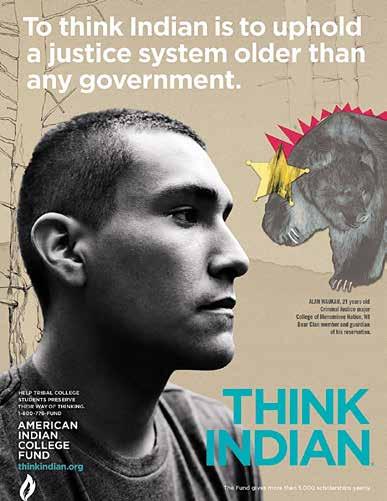
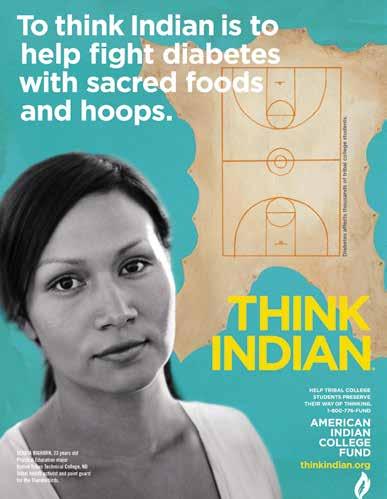
Advertisement
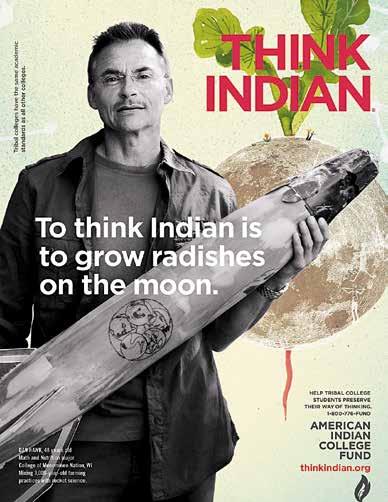
By Richard B. Williams, President and CEO, The American Indian College Fund
The American Indian College Fund’s most recent public service
announcement campaign, titled Think Indian, was the brain child of the creative minds at the Portland, Oregon-based advertising agency Wieden+Kennedy, known for its signature work for Nike, Target, and Coca-Cola. The development of the campaign was led by the company’s talented co-founder, David Kennedy. For the past twenty years, David Kennedy has dedicated his time to providing pro bono advertising services to the American Indian College Fund to tell the story of our students and the tribal colleges to the public.
The Think Indian campaign was designed to replace the “If I Stay on the Rez” campaign, which featured tribal college students stating why they preferred to stay at home and pursue an education in their reservation communities at a tribal college. The Think Indian campaign was a natural transition from the previous “Rez” campaign, as it incorporates the importance of Native peoples developing their inherent intellectualism at the local level through the tribal colleges and universities (TCUs). The advertisements also promote how the TCUs preserve the uniquely American Indian way of thinking, while celebrating Indian cultures and embracing the latest research and technology, and how they have become cultural oases where old wisdom and new ideas are fused. “These unique, under-funded institutions are the only places where convention and culture, tradition and modern, meet. We have much to learn from the indigenous people of this country,” said David Kennedy of Wieden+Kennedy. “It is an honor to tell their story.” The Think Indian advertisements also impart a broad symbolic message to Americans about the importance of the welfare of our Mother Earth, and how traditional American Indian ways of thinking, or “Thinking Indian,” can contribute to hers—and all peoples’ well-being.
American Indians and others are embracing the messages in the Think Indian advertisements because they challenge us to think critically about both the wisdom and truth behind traditional Native concepts.
To create the campaign, the American Indian College Fund traveled with Wieden+Kennedy to several tribal colleges to document the stories of several American Indian students. A series of six advertisements were produced as a result, which feature students on-location at the College of Menominee Nation in Keshena, Wisconsin; Sitting Bull College in Fort Yates, North Dakota; United Tribes Technical College in Bismarck, North Dakota; and the Institute of American Indian Arts in Santa Fe, New Mexico. The students chosen, who are detailed below, were selected based on their scholarship status with the American Indian College Fund, outstanding academic performance, their dedication to preserving and passing on traditional Native values, and how they are incorporating traditional cultural values with modern education and technology in their planned career paths to meet contemporary societal challenges.
Allyson Two Bears, an environmental science major at Sitting Bull College, is a fourth-generation medicine woman who received knowledge of traditional medicinal plants from her forebears. Now that Allyson is a mother of two, she finds herself passing on her knowledge and her peoples’ traditions to her children, following in the footsteps of her maternal ancestors. Allyson says her tribal college plays a role in both her science and Native education as she learns more about her native plants in her ethnobotany class. Allyson plans to reconnect people of all ages with nature in her career as she develops and teaches programs about conservation, nature and wildlife to help preserve the Earth and combat global climate change, while tying in her Native culture and beliefs.
Alan Waukau, a criminal justice major at the College of Menominee Nation, studied criminal justice in the Native style, which is community-oriented and places more emphasis on changing negative behavior than punishing it. Alan is a member of The Bear Clan of the Menominee Nation, which is
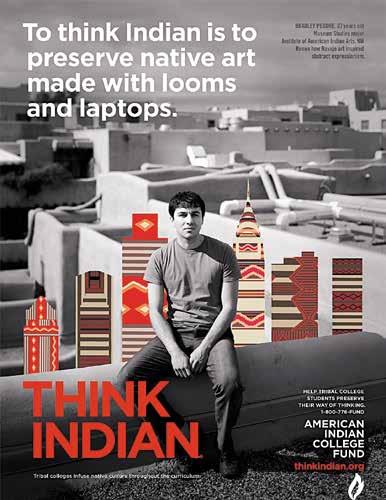

known for being the guardian of the Menominee people. Alan’s goal is to be a police officer, and says he sees no difference between a career in law enforcement in which he will be responsible for guarding the health and safety of his people and his traditional role in his clan.
Sekoya Bighorn, a physical education major at United Tribes Technical College, is learning more about her culture while studying for a degree in physical education. She plans to return home to the Rocky Boy Reservation in Montana to work as a local fitness trainer. Sekoya says she wants to teach her people about the connection between physical activity, traditional life ways, and diabetes prevention.
Dan Hawk, a mathematics and nutrition major at the College of Menominee Nation, was born and raised on the Oneida Indian Reservation in Wisconsin. Dan has dedicated his life to researching ways to bring ancient knowledge to today’s world. He worked with classmates to build the Golden Eagle, an award-winning wooden rocket that was hewn from materials gleaned from their reservation’s sustainable forest. The simple design of Golden Eagle outperformed other rockets made by students at mainstream institutions in a national competition. Dan is conducting experiments for NASA to grow radishes and other foods on the moon and Mars using ancient soil techniques developed by indigenous peoples thousands of years ago, and many others. If the experiment works, American Indians will be seeding space.
Cedar Kakkak recently finished the sustainable development program at the College of Menominee Nation. Cedar says her academic interests grow from her family and community, where the Menominee Forest is a national model for sustainability. In the Menominee language those who manage the forest are known as “Keepers of the Forest.” Though it has been logged several times over, visitors often perceive the Menominee Forest as untouched because of its abundance of hemlock, pine, aspen, and oak trees growing there, thanks to the tribe’s traditional forestry practices that has kept this valuable resource vibrant. Cedar plans to use her traditional values and education in a career in community planning.
Bradley Pecore, a graduate of the Institute of American Indian Arts in museum studies and now a Ph.D. candidate at Cornell University, says he is equally interested in art theory and repatriation of Native artifacts issues. After his junior year at IAIA, Bradley worked as an intern at the Metropolitan Museum of Art in New York City, where he conducted Native American art lectures. Bradley has always had an appreciation for contemporary and traditional Native art and intends to become a professor of art history, showcasing Native art alongside western art.
Dan Hawk notes that he and other tribal college students are able to Think Indian again because the tribal colleges are leading American Indian students to embrace what it means to be Indian and their Native ways of thinking and being. Dan said, “Good things come in small packages. We can start the path of education at our tribal doorstep and then take our values and beliefs to other places where others can see who we really are. In the case of the Menominee, they can take sustainable development that their elders taught them, and teach the rest of the world what their elders knew.”
This body of work not only reflects how American Indian cultural knowledge is being preserved by tribal colleges and used to solve today’s problems for all people, but it also depicts the depth, beauty, and tenacity inherent in the American Indian students and communities that we serve.
The advertisements are placed in major publications across the country, including The New York Times Magazine, Harper’s, O Magazine, Fortune, and more. Wieden+Kennedy developed an animated
television advertisement that appears on national networks such as Discovery and National Geographic television. This ad also appeared in Times Square in New York City for two months, reaching an estimated 1.5 million people every day. The American Indian College Fund uses these advertisements to induce individual, tribes, corporations, and foundations, all of whom donate money for scholarships and tribal college support, to give generously.
The concepts behind Think Indian ads may appear simple, but they are quite complex, enabling our people to survive after the colonization of America. Mathew King, a philosophical Lakota, stated that the first law of Indian people is “respect.” Thinking Indian means that we must treat all things around us with respect. We must respect the environment, the sacred Mother Earth, our relatives, friends, and even our enemies. This is a good way to live—if we all followed this path, many of the challenges facing us today could be solved.
Language is a natural extension of a people’s belief system. The Lakota notion of respect can be seen in the greeting, “Mitaku oyasin,” which translates to mean all my relatives. One can see that the belief that we must respect every living being because we are all related is seen in this greeting, and is one of the seeds in the Think Indian concept. Lakota philosophy and ways emphasize that we are all related in this world, regardless of the color of another human’s skin. Appearances do not matter; we are all related. Our family extends beyond the human family to all living beings. The Lakota believe we are also related to the birds and animals and even the inanimate rocks. Our fates are interconnected and so we believe that we must respect all that is around us because we are related to everything, and everything is sacred.
For the Lakota people, Thinking Indian means many other things. It includes embodying a spirit of generosity and hospitality and tending those with greater needs than your own.
Thinking Indian also means honoring our elders, whose lifetime of experience and acquired knowledge imbues them with wisdom that cannot be acquired at any university or any other means than through years walking their paths on the earth.
To Think Indian is to offer thanks for the gift of life and the health and safety of all of our relatives.
To Think Indian is to learn the language of our people and preserve their culture and ways in order to help us understand the future.
Thinking Indian is to seek and craft ways to survive, even in the most horrible and challenging times, and overcoming the greatest horrors of genocide.
Thinking Indian means having a deep, profound sense of humor that carries us through the most difficult times of sadness, hardship, combined with a sense of humility that allows us to laugh at ourselves.
Thinking Indian is accepting our responsibility to care for the sacred Mother Earth, and knowing that what we leave for the next generation is either our gift or our fault; and whatever decision we make must be right for the Earth and the next seven generations that follow in our footsteps.
To the Lakota, Thinking Indian above all means that we must use our best intellectual cognitive processes combined with an abiding spirituality, engaging both the heart and mind, to navigate the challenges of daily life while making important decisions that affect the world.
When it comes down to it, the American Indian College Fund wants its tribal college students to employ Native ways of thinking and knowing to guide the people around them in a good way, whether those ways are Dakota, Anishinabee, Diné, or Cheyenne.
And if one is not Native and “Thinks Indian,” one is special because we are all responsible for saving our sacred Mother Earth. All of the world’s peoples have a significant task ahead with global warming, pollution, over-population, habitat destruction and the continuing loss of cultures. But, in the words of Lone Watie in the movie The Outlaw Josie Wales, we must “endeavor to persevere.” Thinking Indian helps guarantee that we will all have a future.
This issue of On Second Thought magazine features the artwork of writer and illustrator


